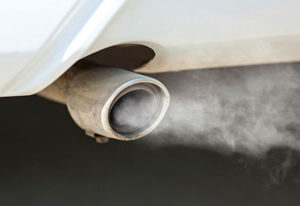07 Jul Toxic Gasses
 Warning signs that your gas appliance requires immediate attention are:
Warning signs that your gas appliance requires immediate attention are:
- Yellow / orange flame
- Excessive condensation in the room where the appliance is installed
- Sooting or staining on or around your appliance
Combustion gases such as carbon monoxide, nitrous oxides and sulphur dioxide produced from gas appliances and unflued gas heaters are a health hazard. New energy efficient homes are most at risk if passive ventilation is compromised as these gases can build up to levels that could cause health problems such as asthma.
Sources & Health Concerns of Gases
- Vehicle exhausts. More people die from breathing outdoor air in Australia, than they do from the road toll. Vehicle exhaust emit a concoction of toxic fumes including carbon monoxide (lethal), carbon dioxide, nitrogen oxides, carbon particles, particulates, black and elemental carbon, ultrafine particles (diesel), dioxins and hydrocarbons such as benzene. Several of these are known to cause cancer, exacerbate asthma and hay fever and can even trigger heart disease. This is why building biologists recommend a garage NEVER be attached to a home.
- Unflued and faulty gas appliances such as gas stoves, heaters and internal gas hot water services may emit nitrogen dioxide, sulphur dioxide, carbon dioxide, formaldehyde and carbon monoxide which may cause fatigue and drowsiness as well as flu like symptoms, coughs, colds, headaches, asthma and even death. They can also produce significant amounts of humidity into the indoor air mass which could provide ideal conditions for mould to grow.
- Oil Furnaces release carbon monoxide, and lead and produce similar air pollutants to what can be found in a car garage.
- Unvented kerosene and gas heaters cause an increased humidity and subsequent condensation problems, and the same sort of noxious gases as stoves. The effect is greater because they are used for longer periods of time. It is critical therefore that they only be used when they are adequately vented to the exterior of the building.
- Wood combustion fire places and stoves release a plethora of noxious agents including carbon monoxide, nitrogen oxides, cancer causing chemicals (polyaromatic hydrocarbons) as well as particles like ash and soot. They are known to cause both lung and heart disease especially in third world countries where they are commonly used. These can be ‘back drafted’ into a home from chimneys and flues that are improperly installed, blocked, leaking or damaged. In some cases, this could be fatal.
Testing Your Home
Air testing is a complicated procedure that requires a thorough knowledge of the sources of potential gases in and around the building, an understanding of the current exposure standards, and the use of highly technical and expensive equipment. A building biologist will test your home for noxious gases and ultrafine particles and provide you with advice to reduce your exposure levels. For details, click here.
Solutions
- Promote passive ventilation. Open windows and doors when gas appliances and wood heaters are in use.
- Ensure the exhaust fan is on when cooking with gas.
- Do not idle the car in a garage if it is attached to the home
- In relation to a wood heater, burn only well dried seasoned wood; ensure the flue is open and kept clear of obstruction.
- A licensed plumber or gas fitter should install, service and maintain a gas appliance and wood heater on a yearly basis.
Want To Learn More?
Courses:
- Healthy Homes course
- Advanced Diploma of Building Biology (10189NAT) Nationally Accredited
DID YOU KNOW
Gas appliances should be serviced annually by a qualified gas fitter to ensure they don’t release toxic gases into the home.
